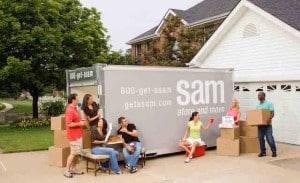1. Start Early – Shoddy packing starts when you feel rushed, so get a head start. You should start packing at least six weeks before moving day. It may seem excessive, but this will give you the time to take things slow. Packing a few boxes a day over several weeks, leaving the items you need on a daily basis for last, will allow you to be methodical and organized so that you don’t get overwhelmed.
2. Label, Label, Label – Label each and every box with a heavy black permanent marker. Packing room by room will make this job even easier, allowing you to label the contents of each box with the room they belong in. This will help you keep track of your belongings and make the unpacking process much easier. You should also mark boxes containing breakable items as “fragile,” to ensure that you and your helpers know what to handle with extra care.
3. Make the Most of Each Box – You should use small boxes for heavier items, like dishes and books. Large boxes should be used for lighter, bulkier items, like bedding. You want to make sure that boxes are not left half-filled, so that they will remain sturdy when stacked. All boxes should retain their square shape, meaning they aren’t bulging or bursting at the seams. This will keep them from tearing and allow them to be stacked safely.
4. Tape it Up – All boxes should be sealed with tape to keep your belongings from getting dirty or dusty when in transit or stored. Using good quality tape is essential when building and sealing boxes. Never rely on cellophane or masking tape. You should look for professional-strength packing tape that is at least 2 inches in width to give your boxes sturdy reinforcement.
5. Stack Safely – Stacking boxes to the ceiling of your moving container allows you to make the best use of your space. Doing this safely means that all your boxes have been built with strong tape and packed to retain a sturdy square shape. Once you begin stacking, you should keep all your heavy boxes at the bottom and build upwards with lighter ones. This step will protect the contents of each box and keep you from getting trapped under a box avalanche.
6. Use Every Inch – Cardboard boxes are not the only packing options you have at your disposal. You can repurpose the vacant interior spaces of appliances, such as refrigerators, pieces of storage furniture, such as dressers and wardrobes, or even empty trashcans. You’ll just want to be sure to keep these types of containers sealed up with tape that won’t damage their surfaces.
7. Get Rid of Odors – While your items are being stored or transported, they are usually not experiencing much airflow. This means that odors can easily be absorbed into fabrics or porous woods. This is why it’s important to eliminate any potential odors in your storage or transport container. Don’t forget to drain the fuel tanks of any equipment you’re packing, such as lawn mowers or weed eaters.
8. Choose SAM Store and Move for Your Container – Our industry-leading storage containers can easily hold the contents of a 1,500-square-foot home. The smooth interior walls allow them to hold and transport all of your valuables safely, without risk of scratches or dings. They also come equipped with 16 mounted tie-down rings that will help you load and store your items securely. Once you have all of your belongings packed safely in our steel framed container, you can relax while we deliver your load to your new home.

